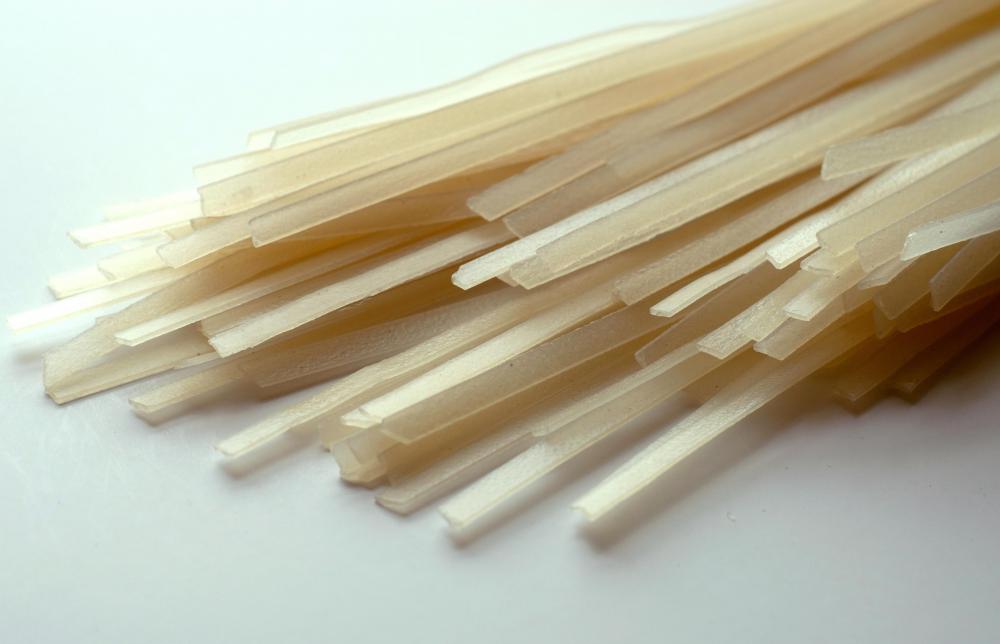At WiseGEEK, we're committed to delivering accurate, trustworthy information. Our expert-authored content is rigorously fact-checked and sourced from credible authorities. Discover how we uphold the highest standards in providing you with reliable knowledge.
What Is Char Kway Teow?
Char kway teow is a Southeast Asian dish most commonly connected to Singapore and Malaysia. The name of the dish comes from the common ingredient to all variants: the stir-fried rice strips that are mixed with a soy sauce, seafood and bean sprouts. It is often eaten at roadside stands or in Chinese restaurants and is high in calories and cholesterol, although, healthier versions exist.
A hint of char kway teow’s origin comes from the final word “teow.” Char kway teow originates in the South China ethnic group called the Teochew, more specifically, around Swatow, or modern day Shantou. As migrants moved from southern China to Southeast Asia, they brought their cuisine with them; however, the same ingredients were not always immediately available. Char kway teow grew out of the improvisations these migrants made.

Farmers and fishermen keen to make an extra buck after their day job finished first served the dish. They would make the dish out of leftover food and then sell it on the streets. As Singapore and Malaysia developed during and after the British Empire era, the making and selling of char kway teow became a full-time business for street hawkers.
As well as being available at roadside stands, the dish can be found in a number of other locations across Southeast Asia. Versions are available from cafes and Chinese restaurants in Singapore. They can also be found in supermarkets and wet markets across the region.

The Singaporean version of char kway teow is sweeter than other versions. As well as rice noodles, it features Chinese sausages called lap cheong, bean sprouts, shrimp paste and, most importantly, cockles. The cockles are often cooked from pre-shelled packets, but traditional hawkers believe fresh, hand-shelled cockles taste better. The ingredients are stir-fried with sweet soy sauce, tamarind juice and pork fat or lard.
In Singapore, there is also a tradition of mixing the rice noodles with yellow noodles. The beginning of the 21st century also saw the development of healthier versions of the dish. These were less oily, removed the pork fat and lard, and added more green vegetables such as cabbage, broccoli and asparagus.
Penang char kway teow is from Malaysia and is more savory than its Singaporean counterpart. The Penang version uses black soy sauce, whole prawns, kuchai and chili powder. More expensive versions add duck eggs and crab meat to the mix. The Miri version of East Malaysia uses beef and onions instead of seafood. As Malaysia is home to a majority Muslim population, there are many halal versions that do not use pork fat or lard.
AS FEATURED ON:
AS FEATURED ON:












Discuss this Article
Post your comments